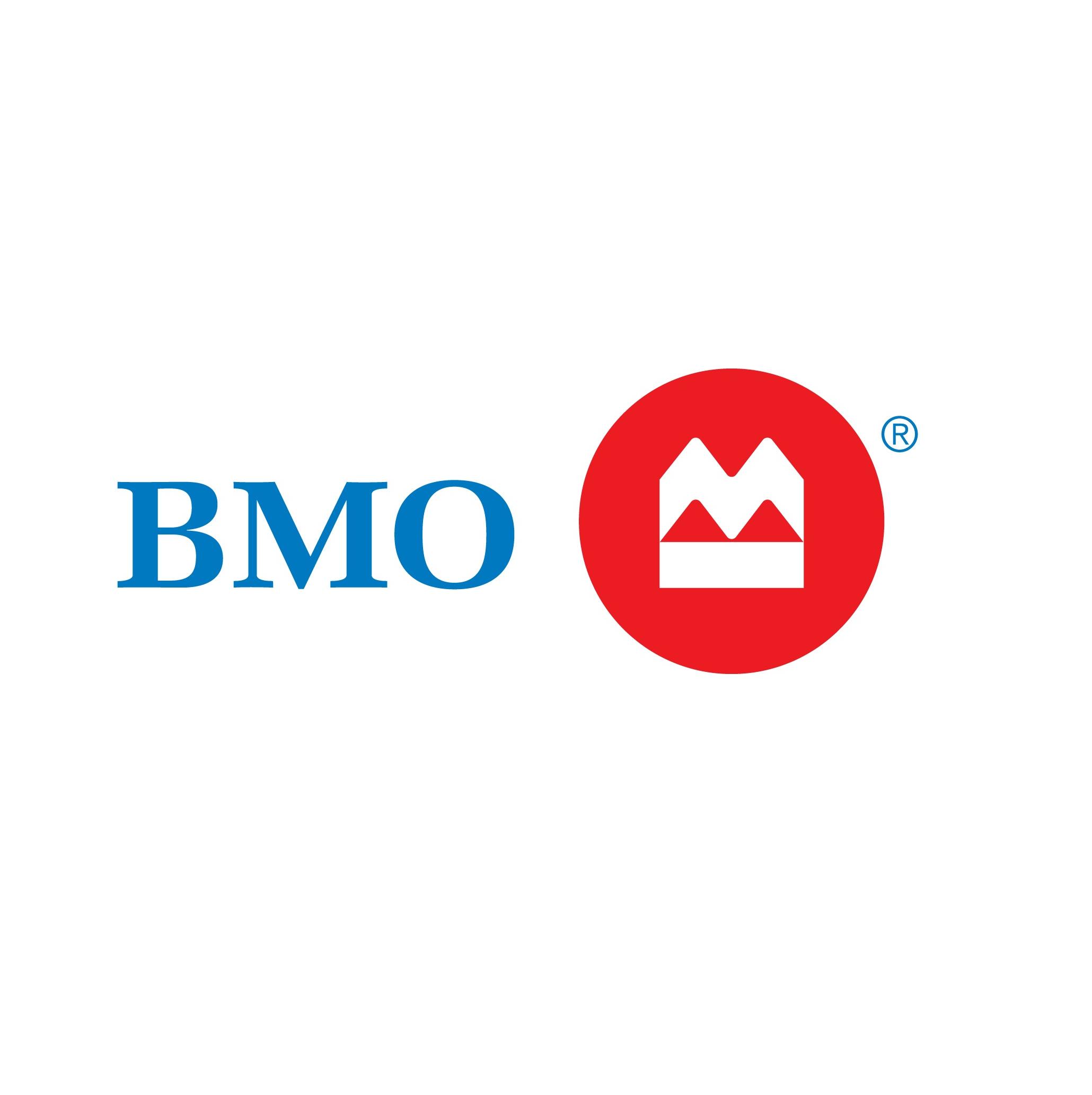

Finance
What Is Capital Markets Origination
Modified: December 30, 2023
Learn about capital markets origination and its importance in the world of finance. Understand how it shapes economic growth and facilitates funding for businesses.
(Many of the links in this article redirect to a specific reviewed product. Your purchase of these products through affiliate links helps to generate commission for LiveWell, at no extra cost. Learn more)
Table of Contents
- Introduction
- Definition of Capital Markets Origination
- Importance of Capital Markets Origination
- Role of Investment Banks in Capital Markets Origination
- Process of Capital Markets Origination
- Types of Capital Markets Instruments
- Key Participants in Capital Markets Origination
- Challenges in Capital Markets Origination
- Future Trends in Capital Markets Origination
- Conclusion
Introduction
Welcome to the world of capital markets origination, a vital component of the global financial system. Capital markets are vital channels through which corporations, governments, and other institutions raise funds to finance their operations and pursue growth opportunities. Capital markets origination refers to the process of creating and issuing various financial instruments in these markets.
Capital markets origination plays a crucial role in facilitating the flow of capital from investors to borrowers. It involves the creation and structuring of diverse securities, such as stocks, bonds, and derivatives, to meet the financial needs of both issuers and investors. Through capital markets origination, organizations can access the necessary funds for expansion, innovation, and operational purposes. At the same time, investors have the opportunity to allocate their capital and earn returns.
The importance of capital markets origination cannot be overstated. It serves as a critical link between savers and borrowers, fostering economic growth and development. When organizations can raise capital efficiently and effectively, they can invest in new projects, create jobs, and drive innovation. This, in turn, boosts economic activity and generates wealth for all stakeholders.
Investment banks, with their specialized expertise, play a central role in capital markets origination. They assist organizations in structuring and executing the issuance of financial instruments. Investment banks serve as intermediaries between issuers and investors, providing valuable advice, underwriting services, and market-making activities.
In this article, we will explore the process of capital markets origination, the types of financial instruments involved, the key participants, the challenges faced, and the future trends. This comprehensive overview will provide you with essential insights into this dynamic and crucial aspect of the financial world.
Definition of Capital Markets Origination
Capital markets origination is the process of creating and issuing financial instruments in the capital markets. It involves the structuring and execution of various securities, such as stocks, bonds, and derivatives, to meet the financing needs of organizations and provide investment opportunities to individuals and institutions.
This process begins with the identification of the financial requirements of issuers, who may be corporations, governments, or other entities. These issuers collaborate with investment banks and other financial intermediaries to determine the most suitable type of financial instrument and the optimal terms and conditions.
Capital markets origination encompasses activities such as underwriting, syndication, and distribution of securities. Investment banks play a crucial role in this process by providing expertise in structuring and marketing these instruments to potential investors.
Through capital markets origination, organizations can raise funds for various purposes, such as expanding their operations, financing acquisitions, refinancing existing debt, or funding research and development initiatives. Investors, on the other hand, have the opportunity to invest their capital in secure and potentially lucrative avenues.
The success of capital markets origination relies on efficient pricing, attractive terms, and effective marketing strategies. These factors are influenced by market conditions, investor demand, regulatory requirements, and the overall economic environment.
Overall, capital markets origination serves as an essential mechanism for channeling funds from those who have surplus capital to those who need it for growth and innovation. It promotes economic development, wealth creation, and market liquidity, benefiting both issuers and investors.
Importance of Capital Markets Origination
Capital markets origination plays a crucial role in the global economy by facilitating the efficient allocation of capital and promoting economic growth. Here are some key reasons why capital markets origination is important:
1. Financing Business Growth: Capital markets origination enables organizations to access the funds they need to expand their operations, invest in new projects, and drive innovation. By issuing securities, such as stocks and bonds, companies can raise capital from a wide range of investors, including individuals, institutional investors, and pension funds.
2. Diversification of Investment Opportunities: Capital markets origination offers investors a diverse range of investment opportunities. As securities are created and issued, investors can choose from various asset classes, industries, and geographic regions, allowing them to diversify their portfolios and reduce risk.
3. Efficient Allocation of Capital: Capital markets origination helps ensure that capital is allocated to its most productive uses. Issuers can showcase their investment proposals, and investors can allocate their capital to projects with the highest potential return on investment. This efficient allocation of capital drives economic growth and productivity.
4. Enhancing Market Liquidity: By creating and issuing securities, capital markets origination enhances the liquidity of financial markets. Investors can buy and sell these securities on secondary markets, providing flexibility and ease in managing their investments. This liquidity promotes market efficiency and fosters investor confidence.
5. Risk Management: Capital markets origination allows organizations to mitigate risks and manage their balance sheets effectively. For example, companies can issue bonds to refinance existing debt at lower interest rates or hedge interest rate risks through the issuance of interest rate derivatives. These risk management tools contribute to overall financial stability.
6. Job Creation and Economic Development: When organizations secure funding through capital markets origination, they can invest in new projects, expand their operations, and create job opportunities. This leads to economic development, stimulates consumer spending, and generates tax revenues for governments.
Overall, capital markets origination serves as a vital link between borrowers and investors, promoting economic growth, innovation, and stability in the global financial system. Without this process, organizations would struggle to access the capital they need to thrive, and investors would have limited opportunities to earn returns on their investments.
Role of Investment Banks in Capital Markets Origination
Investment banks play a crucial role in capital markets origination by providing specialized expertise and a range of services to both issuers and investors. Here are the key roles investment banks play in the process:
1. Advisory Services: Investment banks act as trusted advisors to issuers, helping them navigate the complex process of capital markets origination. They provide strategic advice on the optimal structure, timing, and pricing of securities based on market conditions, investor demand, and the issuer’s financial goals. Investment banks also assist in identifying potential risks and opportunities associated with the issuance.
2. Underwriting: Investment banks play a critical role in underwriting securities issued in capital markets origination. Underwriting involves assuming the risk of purchasing the securities from the issuer and reselling them to investors. Investment banks leverage their expertise, research capabilities, and distribution network to underwrite the securities effectively. This helps issuers mitigate the risk of an unsuccessful offering and provides them with the assurance of accessing the required funds.
3. Syndication: In situations where the size of the offering is significant, investment banks may form syndicates to underwrite and distribute the securities. Syndication involves spreading the risk among multiple banks, ensuring that large issuances can be adequately supported. Investment banks lead these syndicates, coordinating the underwriting efforts and allocating portions of the securities to participating banks based on their respective commitments.
4. Market Making: Investment banks serve as market makers in the secondary market for securities created through capital markets origination. As market makers, they provide liquidity by actively buying and selling securities, thereby facilitating trading and ensuring a fair and orderly market. Market makers help investors buy and sell securities at competitive prices, contributing to the overall efficiency and stability of the capital markets.
5. Research and Analysis: Investment banks conduct in-depth research and analysis on various industries, companies, and market trends. This research is crucial for both issuers and investors in making informed decisions regarding capital markets origination. Investment banks provide valuable insights and recommendations on the attractiveness of investment opportunities, the competitive landscape, and the potential risks involved.
6. Investor Relations: Investment banks play a role in building and managing relationships with potential investors. Through their extensive networks and investor outreach activities, they help issuers connect with appropriate investors who have an interest in the securities being issued. Investment banks also assist in roadshows and investor presentations to market the offering to potential buyers.
7. Regulatory Compliance: Investment banks ensure compliance with various regulatory requirements and disclosure obligations associated with capital markets origination. They assist issuers in preparing necessary documentation, such as prospectuses and offering circulars, and guide them through the regulatory approval process. Investment banks help issuers navigate the legal and regulatory complexities, ensuring compliance and transparency in the offering.
Overall, investment banks are instrumental in facilitating capital markets origination. Their expertise, extensive networks, and range of services enable issuers to access the necessary funding and investors to find attractive investment opportunities. Investment banks play a vital role in ensuring the success and efficiency of the capital markets ecosystem.
Process of Capital Markets Origination
The process of capital markets origination involves several key steps, from the initial planning stages to the final issuance and trading of securities. Here is an overview of the typical process:
1. Needs Assessment: The process begins with issuers, such as corporations or governments, identifying their financial needs and determining the purpose of raising capital. They evaluate their funding requirements for projects, expansion, or refinancing existing debt.
2. Engagement of Investment Banks: Issuers engage investment banks to seek their expertise in capital markets origination. The investment banks work closely with the issuers to understand their goals, evaluate their financial position, and propose suitable financing options.
3. Structuring and Documentation: Once engaged, investment banks assist in structuring the offering. This involves determining the type of security, such as equity or debt, that best suits the issuer’s needs and market conditions. The investment banks also collaborate with legal teams in drafting the necessary documentation, including prospectuses or offering memorandums.
4. Due Diligence: Before proceeding with the offering, investment banks conduct due diligence to ensure that all material information about the issuer is accurate and the risks are adequately disclosed. They evaluate the issuer’s financial statements, business operations, industry outlook, and legal and regulatory compliance.
5. Pricing and Allocation: Investment banks assist issuers in determining the appropriate pricing for the securities. This involves analyzing market conditions, investor demand, and the issuer’s financial strength. Investment banks also allocate the securities to potential buyers, taking into account investor preferences, order size, and regulatory guidelines.
6. Underwriting and Syndication: Investment banks may underwrite the offering, assuming the risk of purchasing the securities from the issuer and reselling them to investors. In larger issuances, investment banks may form syndicates to underwrite and distribute the securities, spreading the risk among multiple banks.
7. Marketing and Roadshows: Investment banks engage in marketing efforts to promote the offering to potential investors. They organize roadshows, investor presentations, and meetings to generate interest in the securities and provide investors with an opportunity to ask questions and obtain further information.
8. Regulatory Approval: Investment banks work with issuers to ensure compliance with regulatory requirements for capital markets origination. They assist in preparing and filing necessary documentation with regulatory authorities, such as prospectuses or registration statements, and guide issuers through the approval process.
9. Securities Issuance: Once all the necessary steps are completed and regulatory approvals are obtained, the securities are finalized and issued to investors. The investment banks coordinate the issuance process, ensuring smooth settlement and delivery of the securities.
10. Trading and Secondary Market: After the issuance, the securities are listed and traded on secondary markets. Investment banks may act as market makers, facilitating trading and providing liquidity to investors. They help ensure that investors can buy and sell the securities at fair prices.
Throughout the process of capital markets origination, investment banks play a critical role in guiding issuers, underwriting securities, marketing the offering, and ensuring regulatory compliance. Their expertise and services contribute to the successful completion of the offering and the efficient functioning of the capital markets.
Types of Capital Markets Instruments
Capital markets origination involves the creation and issuance of various financial instruments. These instruments serve as vehicles for raising capital and provide investment opportunities to individuals and institutions. Here are some commonly used types of capital markets instruments:
1. Stocks (Equity): Stocks represent ownership shares in a corporation. When a company goes public, it issues shares of stock to the public, allowing investors to become partial owners of the company. Investors earn returns through dividends and capital appreciation as the value of the stock increases over time.
2. Bonds (Debt): Bonds are debt instruments issued by corporations, governments, or other entities to raise funds. Investors who purchase bonds lend money to the issuer and receive regular interest payments and the return of the principal upon maturity. Bonds can vary in terms of maturity, interest rates, and credit ratings.
3. Treasury Securities: Treasury securities are debt instruments issued by governments to fund their operations and manage national debt. They include Treasury bills (short-term debt), Treasury notes (medium-term debt), and Treasury bonds (long-term debt). These securities are considered low-risk investments and are often used as benchmark rates for other fixed-income instruments.
4. Derivatives: Derivatives are financial instruments whose value is derived from an underlying asset or reference rate. They include options, futures, swaps, and forwards. Derivatives are used for risk management, hedging, and speculation purposes, allowing investors to gain exposure to various asset classes without physically owning the underlying assets.
5. Commodities: Commodities are physical assets such as gold, oil, or agricultural products. Capital markets offer instruments, such as commodity futures contracts, that allow investors to trade these commodities. Investing in commodities can provide diversification and protection against inflationary pressures.
6. Exchange-Traded Funds (ETFs): ETFs are investment funds that trade on stock exchanges. They represent a basket of securities, such as stocks, bonds, or commodities, and aim to replicate the performance of a specific index or sector. ETFs provide investors with diversification and flexibility, allowing them to gain exposure to a wide range of assets within a single investment vehicle.
7. Real Estate Investment Trusts (REITs): REITs are investment vehicles that pool capital from multiple investors to invest in income-generating real estate properties. Investors in REITs receive dividends based on the income generated from rent or property sales. REITs provide opportunities for investors to access the real estate market without directly owning physical properties.
8. Structured Products: Structured products are customized investment instruments that combine traditional securities with derivative components. They are designed to meet specific investment objectives or cater to the risk appetite of investors. Examples include collateralized debt obligations (CDOs) and mortgage-backed securities (MBS).
9. Money Market Instruments: Money market instruments are short-term debt securities with high liquidity and low risk. They include Treasury bills, certificates of deposit (CDs), commercial paper, and repurchase agreements (repos). These instruments provide investors with a safe place to park excess funds and earn interest.
10. Preferred Stocks: Preferred stocks are hybrid securities that combine features of both stocks and bonds. They provide investors with a fixed dividend payment, similar to bond interest, and have a higher claim on the company’s assets compared to common stocks. Preferred stocks offer a balance of income and potential capital appreciation.
These are just a few examples of the wide range of capital markets instruments available. Each instrument has its unique characteristics, risk profile, and potential return, allowing investors to tailor their investment portfolios to meet their specific goals and preferences.
Key Participants in Capital Markets Origination
Capital markets origination involves the collaboration of various participants who play essential roles in the issuance and trading of securities. Here are the key participants in the process:
1. Issuers: Issuers are organizations, such as corporations or governments, seeking to raise capital through capital markets origination. They issue securities, such as stocks or bonds, to attract investment and fund their operations, projects, or debt refinancing. Issuers determine the type of securities, their terms, and the amount they want to raise.
2. Investment Banks: Investment banks are financial institutions that specialize in capital markets origination. They act as intermediaries between issuers and investors, providing advisory services, underwriting, and distribution of securities. Investment banks assist issuers in structuring the offering, assessing market conditions, pricing the securities, and marketing the offering to potential buyers.
3. Investors: Investors are individuals, institutions, or other entities that purchase securities issued through capital markets origination. They deploy their capital in various instruments, such as stocks, bonds, or derivatives, to earn returns. Investors contribute to the liquidity and efficiency of the capital markets through their participation in buying and selling securities.
4. Regulators: Regulators, such as securities commissions or financial regulatory authorities, oversee and enforce regulations related to capital market activities. They establish rules and guidelines to ensure fair and transparent practices, protect investors, and maintain the integrity of the financial system. Regulators play a crucial role in approving and monitoring the issuance and trading of securities.
5. Underwriters: Underwriters are entities that assume the risk of purchasing securities from the issuer and resell them to investors. Underwriters, often investment banks, provide a guarantee to the issuer that the securities will be sold at a specific price, ensuring the success of the offering and the issuer’s access to capital.
6. Exchange or Trading Platforms: Exchanges or trading platforms facilitate the buying and selling of securities in the secondary market. They provide a regulated marketplace where securities are listed and traded. Participants can access these platforms to execute transactions, ensuring liquidity and transparency in the trading process.
7. Rating Agencies: Rating agencies assess the creditworthiness and risk profile of issuers and their securities. They assign credit ratings that indicate the likelihood of timely repayment of interest and principal. Rating agencies play a crucial role in providing independent evaluation of securities, helping investors make informed investment decisions based on risk assessment.
8. Legal and Accounting Professionals: Legal and accounting professionals provide critical support in the capital markets origination process. They ensure compliance with legal and regulatory frameworks, assist in preparing offering documentation, and provide valuable advice on corporate governance, disclosure requirements, and financial reporting standards.
9. Market Participants and Intermediaries: Market participants and intermediaries include brokers, dealers, market makers, and investment advisors. They facilitate the buying and selling of securities, execute transactions on behalf of clients, provide market liquidity, and offer investment advice. These participants contribute to the efficient functioning of the capital markets.
10. Research Analysts and Financial Media: Research analysts and financial media provide valuable information, analysis, and insights about capital market trends, companies, and investment opportunities. They offer research reports, news articles, and market commentary that help investors make informed decisions and stay updated with the latest developments in the capital markets.
The collaborative efforts and expertise of these key participants ensure the smooth functioning of capital markets origination, enabling issuers to raise capital and investors to find attractive investment opportunities.
Challenges in Capital Markets Origination
Capital markets origination is a complex and dynamic process that involves various challenges. These challenges can impact the successful issuance and trading of securities. Here are some key challenges faced in capital markets origination:
1. Market Volatility: Capital markets are influenced by economic, political, and global events, leading to market volatility. Fluctuations in interest rates, exchange rates, and investor sentiment can affect the pricing and demand for securities, making it challenging to determine optimal pricing and timing for issuances.
2. Regulatory Compliance: Capital markets are subject to extensive regulations and disclosure requirements to protect investors and ensure market integrity. Navigating through these regulations and compliance obligations can be complex and time-consuming. Failure to comply with regulatory requirements may result in penalties and reputational damage.
3. Investor Sentiment and Demand: The success of capital markets origination depends on investor sentiment and demand for securities. Market conditions and investor perception of the issuer’s creditworthiness can impact interest in the offering. Predicting investor demand accurately and tailoring the securities to meet the preferences of investors can pose challenges.
4. Competitive Landscape: The capital markets arena is highly competitive, with multiple issuers vying for investor attention and investment dollars. Issuers need to differentiate themselves and market their offerings effectively to stand out among the competition. Investment banks may also face challenges in securing underwriting mandates in a competitive environment.
5. Pricing Accuracy: Determining the optimal pricing for securities is crucial for attracting investors, ensuring successful issuance, and avoiding over- or underpricing. Incorporating various factors such as market conditions, issuer’s creditworthiness, and investor demand requires careful analysis and accurate pricing models.
6. Information Asymmetry: In the capital markets, there can be an imbalance of information between issuers and investors. Issuers have in-depth knowledge of their business and prospects, while investors rely on disclosed information and research reports. Bridging the information gap and ensuring transparency is essential to build investor trust and facilitate fair pricing.
7. Market Illiquidity: Some sectors or securities may face limited liquidity in the secondary market, making it challenging for investors to buy or sell securities when desired. Illiquid markets can result in wider bid-ask spreads, reduced trading volumes, and potential price distortions, affecting investment decisions and secondary market transactions.
8. Global Economic Factors: Capital markets are influenced by global economic factors, such as economic growth, inflation rates, and geopolitical events. Changes in these factors can impact investor confidence, interest rates, and market conditions, presenting challenges for issuers and investment banks in executing successful issuances.
9. Crowded Market and Investor Fatigue: A high volume of issuances, particularly in a specific sector, can lead to a crowded market. This may result in investor fatigue or saturation, making it more challenging for issuers to attract interest in their offering. Issuers need to differentiate their securities and offer compelling investment propositions to overcome market saturation.
10. Technological Disruptions: Technological advancements and digitalization are reshaping the capital markets landscape. Investment banks and market participants need to adapt to these disruptions, such as the rise of online trading platforms and the use of artificial intelligence in investment decision-making. Keeping up with evolving technologies can pose challenges for traditional market participants.
Overcoming these challenges requires a combination of strategic planning, in-depth market analysis, regulatory compliance, effective communication, and the ability to adapt to changing market dynamics. By understanding these challenges, participants in capital markets origination can work towards managing risks and maximizing the opportunities presented in the ever-evolving financial world.
Future Trends in Capital Markets Origination
Capital markets origination is constantly evolving to adapt to changing market dynamics, technological advancements, and investor preferences. Here are some key future trends that are likely to shape the landscape of capital markets origination:
1. Rise of Sustainable Finance: The demand for sustainable and socially responsible investments is growing rapidly. In response to this trend, capital markets origination is shifting towards the issuance of green bonds, social bonds, and sustainability-linked instruments. These instruments allow issuers to raise funds for environmentally and socially conscious projects, attracting a broader range of investors who prioritize ethical investment practices.
2. Digitalization and Fintech Integration: Technology-driven innovations such as blockchain, artificial intelligence (AI), and cloud computing are transforming capital market operations. Digitalization enables streamlined processes, enhanced transparency, and lower transaction costs. Fintech companies are emerging as competitors to traditional investment banks, offering online platforms for capital markets origination and trading, making the process more accessible and efficient.
3. Continued Growth of Private Markets: There is an increasing trend of companies choosing to stay private for longer or opting for private capital raises instead of going public. This shift is driven by factors such as regulatory burdens, increased availability of private funding, and a desire to maintain control over the company. Capital markets origination is likely to see continued growth in private market fundraising, offering new opportunities for investors seeking exposure to pre-IPO companies and alternative investments.
4. Expansion of Emerging Markets: Capital markets origination is expected to witness significant growth in emerging markets. Rapid economic growth, urbanization, and a rising middle class in emerging economies are driving increased capital market activity. As these markets develop, issuers will seek to tap into local and international investors, creating new opportunities for investment banks and investors alike.
5. Enhanced Regulatory Frameworks: Regulatory authorities continue to refine and strengthen regulations governing capital markets origination. The focus is on investor protection, market transparency, and addressing potential systemic risks. Stricter regulatory frameworks will place greater importance on compliance, disclosure, and risk management practices for issuers and investment banks.
6. Increased Focus on Alternative Assets: As traditional asset classes become more crowded, capital markets origination is moving towards alternative assets such as private equity, venture capital, real estate, and infrastructure. Issuance of securities in these alternative asset classes provides diversification opportunities for investors and allows issuers to tap into non-traditional sources of funding.
7. Emphasis on AI and Data Analytics: Investment banks and market participants are leveraging the power of AI and data analytics to make informed investment decisions and enhance traditional due diligence processes. AI can efficiently analyze vast amounts of data, detect patterns, and predict market trends, improving the accuracy of pricing models and risk assessments in capital markets origination.
8. Increased Importance of Investor Relations and ESG Disclosure: Investor relations will play a crucial role in capital markets origination as issuers focus on building long-term relationships with investors. Effective communication, transparency, and disclosure of environmental, social, and governance (ESG) factors are becoming essential for attracting investors who prioritize sustainable and responsible investments.
9. Securitization and Asset Tokenization: The securitization of non-traditional assets, such as intellectual property, royalties, and future cash flows, is expected to gain momentum in capital markets origination. Additionally, the tokenization of assets using blockchain technology may disrupt and streamline the issuance and trading of securities, making it more accessible to a wider investor base.
10. Global Collaboration and Integration: Capital markets origination is becoming increasingly globalized, with issuers, investors, and market participants operating across borders. Collaborations between different jurisdictions and regulatory bodies are crucial to ensuring harmonized standards, facilitating cross-border investments, and fostering an integrated global capital market ecosystem.
These future trends in capital markets origination will shape the way issuers raise capital, investors allocate their funds, and investment banks facilitate the process. Embracing these trends and staying ahead of technological advancements will be key to driving innovation, enhancing efficiency, and meeting the evolving needs of issuers and investors in the dynamic landscape of capital markets origination.
Conclusion
Capital markets origination is a fundamental component of the global financial system, serving as a crucial mechanism for organizations to raise capital and investors to find attractive investment opportunities. Throughout this article, we have explored the definition, importance, and process of capital markets origination, as well as the role of investment banks, types of instruments, key participants, challenges, and future trends.
Capital markets origination plays a pivotal role in financing business growth, diversifying investment opportunities, and efficiently allocating capital. Investment banks serve as key intermediaries, providing advisory services, underwriting support, and market-making activities. They help issuers structure their offerings, market them to potential investors, and ensure regulatory compliance.
The types of capital markets instruments are diverse, ranging from stocks and bonds to derivatives and alternative assets. Each instrument offers unique features and benefits, catering to different investment objectives and risk appetites. Meanwhile, key participants such as issuers, investors, regulators, and market intermediaries collaborate to ensure an efficient and transparent capital markets ecosystem.
While capital markets origination presents significant opportunities, it is not without challenges. Market volatility, regulatory compliance, investor sentiment, and technological disruptions can pose hurdles in the process. However, embracing future trends, such as sustainable finance, digitalization, and alternative assets, can open new avenues for growth and innovation.
In conclusion, capital markets origination plays a critical role in fostering economic growth, driving innovation, and providing investment opportunities. The collaboration of various participants, the adoption of emerging trends, and the adherence to regulatory standards are essential for the successful origination and trading of securities.
As the financial landscape continues to evolve, capital markets origination will remain a dynamic and crucial aspect of the global economy. Understanding its intricacies and adapting to emerging trends will allow organizations, investors, and market participants to navigate the complexities of the capital markets effectively and seize opportunities for growth and prosperity.














